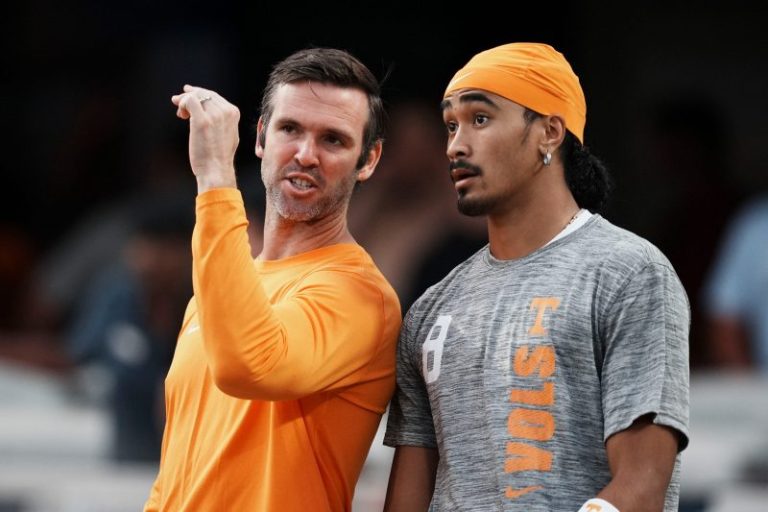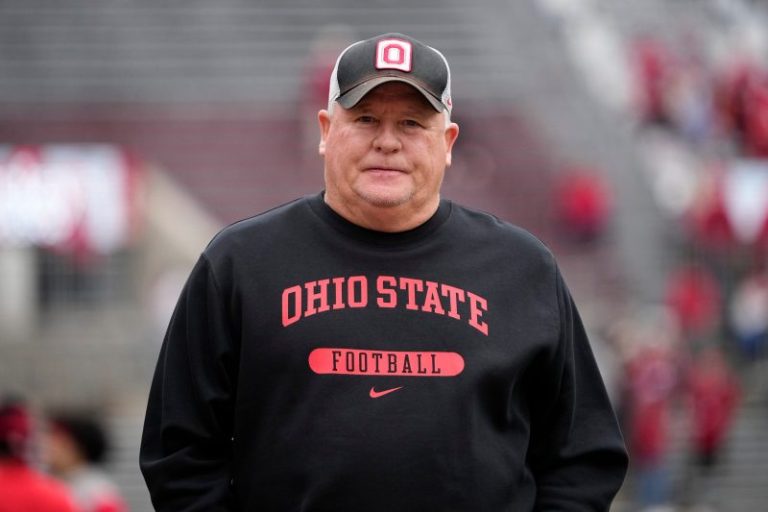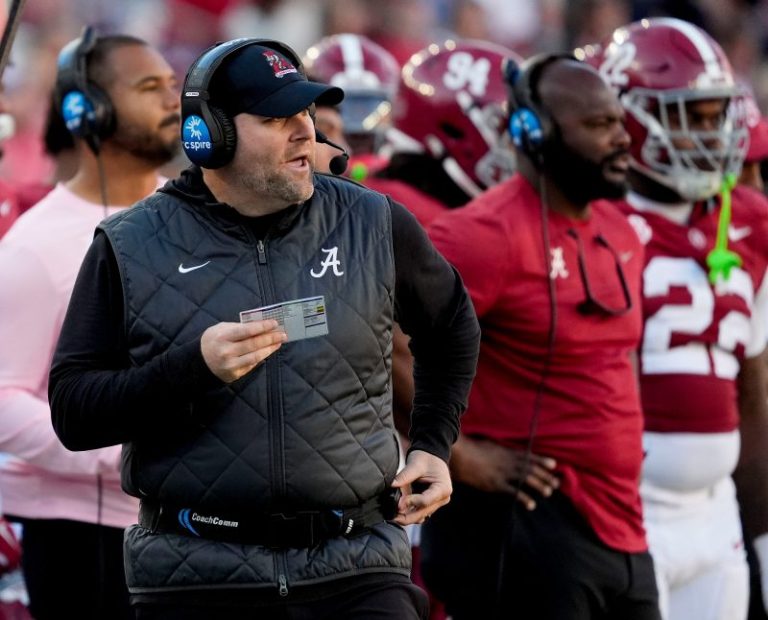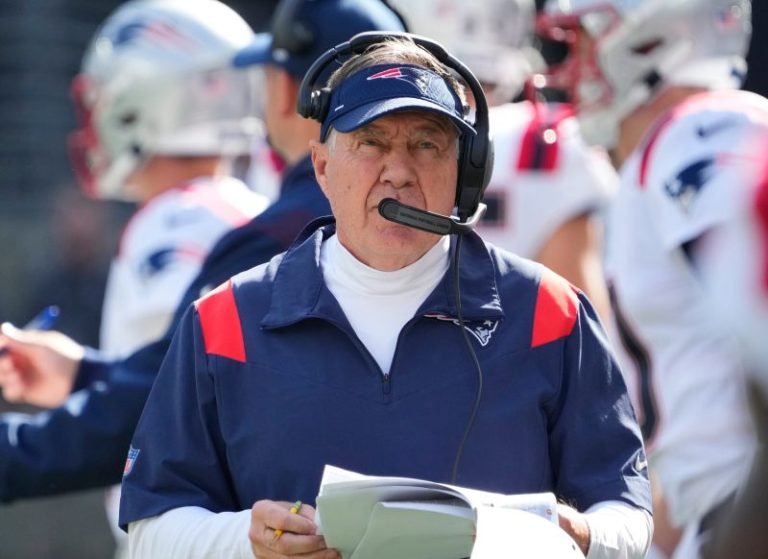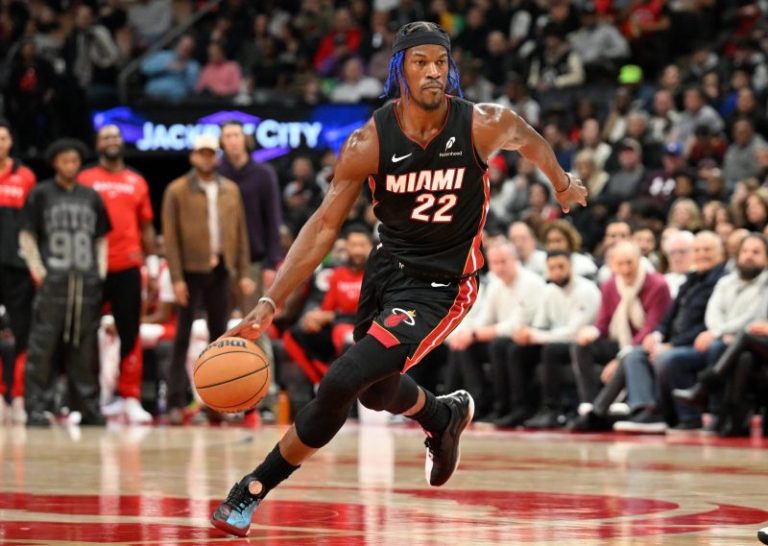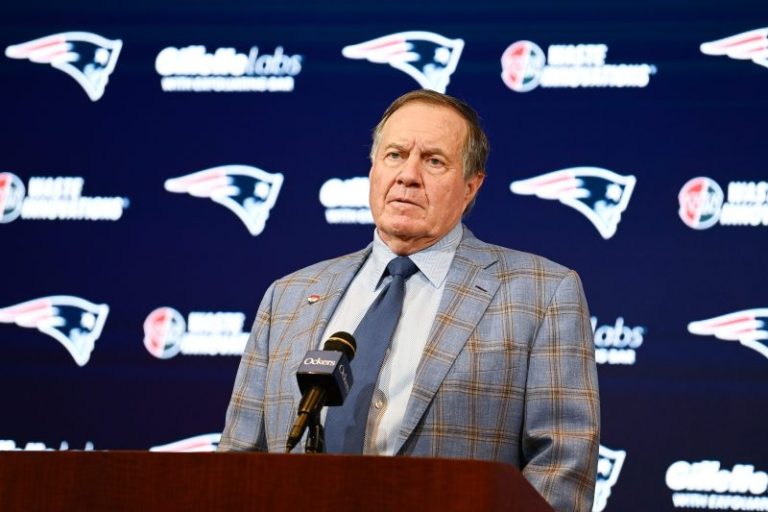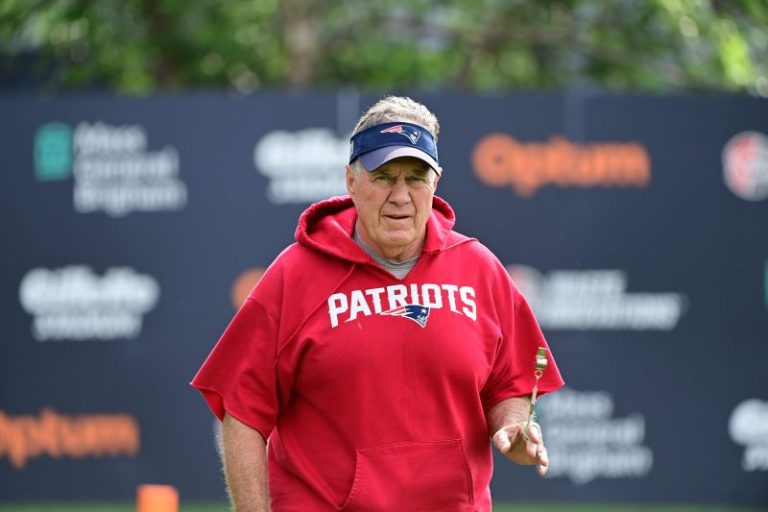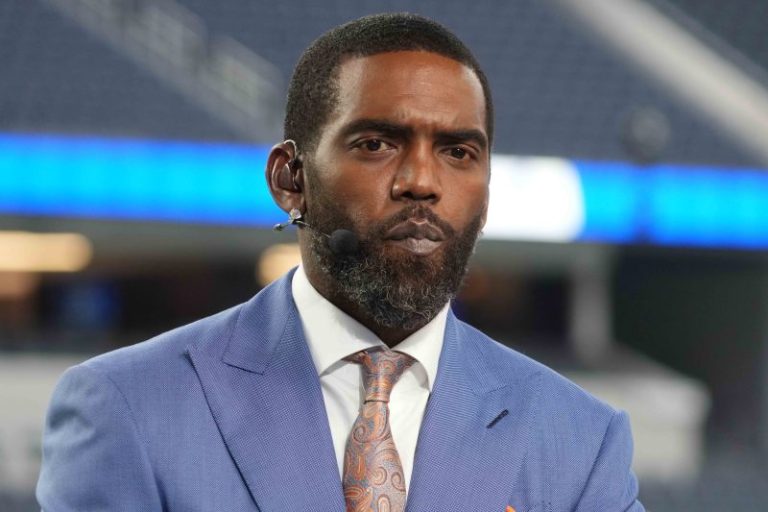Kane Wommack had wanted to be a head college football coach since he was 6, when he dressed in one of his father’s hats and whistles for Halloween.
On the surface, it might have seemed like an unusual career move – a step backwards, perhaps, for a sitting head coach coming off back-to-back winning seasons. But shifting dynamics in the FBS, including a growing chasm between the sport’s haves and have-nots, have changed the calculus for coaches as they attempt to climb the ranks.
Not only did Wommack avoid a pay cut while taking on a lesser title at Alabama. His base pay nearly doubled, from $810,000 to $1.55 million. And he wasn’t alone.
In the span of just a few weeks last winter, four of the 61 head coaches at Group of Five schools left to become assistants in the more competitive and well-heeled Power Four. That’s on top of the two Power Four head coaches over the past year who also have resigned to become college coordinators – most recently Gus Malzahn, who stepped down last month at Central Florida to become the offensive coordinator at Florida State.
In news conferences or interviews, each of the aforementioned coaches have cited different reasons for leaving their head coaching jobs, such as being closer to family or getting the opportunity to work for a friend. But coaches and athletics directors also acknowledge that a changing FBS landscape has made such moves more practical.
As part of its annual survey of assistant coach compensation, USA TODAY Sports found that it’s never been more lucrative to be an offensive or defensive coordinator at the Power Four level, with the average pay for those positions increasing nearly 25% in just four years, up to $1.1 million annually in 2024. And this year, for perhaps the first time, Power Four coordinators are making even more than Group of Five head coaches, whose average pay is $1.05 million.
At the same time, coaches and athletics directors say it’s also never been more difficult – or more complicated – to be a head coach. This is especially true in the Group of Five, where the rules changes empowering players to more easily transfer and profit off their name, image and likeness have had a more jarring impact than in the Power Four.
“It’s a lot different (in the Group of Five), I can tell you that,” said Jerry Kill, who stepped down as New Mexico State’s head coach last year before later accepting a consulting job at Vanderbilt.
“I think people just say, ‘Hey, I’ll just go be a coordinator and make good money.’ You see older guys doing that more than anybody, I think.”
More million-dollar coordinators
Few coaches will publicly own up to taking a job because of the money.
But ballooning revenues have quietly made it either financially worthwhile for Group of Five head coaches to leave for Power Four coordinator jobs, or effectively taken money out of the equation.
‘We’ve really seen, in the power conferences in the last 10 to 12 years, the money just keeps getting better and better,’ said agent Dennis Cordell, whose firm Coaches Inc. works with more than 300 coaches across a dozen sports, including both college football and the NFL.
‘Even $1.5 (million) to $2 million for a coordinator – at the best schools, that’s about the going rate these days. … That was a head coach’s salary 10 years ago, 12 years ago.’
Sure enough, the highest-paid assistant in USA TODAY Sports’ 2024 pay survey, LSU defensive coordinator Blake Baker, is making $2.5 million − the same base pay as the highest-paid head coach in what has been considered the Group of Five, South Florida coach Alex Golesh.
There are 78 assistants at FBS public schools this season making at least $1 million − including 18 position coaches and a whopping six assistants from the same school: Ohio State. When USA TODAY Sports first started tracking assistant coach pay in 2009, there was just one (when not adjusting for inflation).
South Alabama athletics director Joel Erdmann, who promoted Major Applewhite to replace Wommack, described this as a new reality of the sport. He said schools like his used to be able to offer Power Four coordinators a raise when pursuing them for head coaching jobs. Now, it’s usually a lateral move, money-wise – and, for some coaches, a pay cut.
“As those resources have grown for (the Power Four), the gap between the coordinators – and, honestly, some position coaches now even – can make it a little more problematic from a financial standpoint to secure those guys,” Erdmann said.
Making the money work
Of the four Group of Five head coaches who left their roles for Power Four assistant coaching gigs last year, none lost significant ground in terms of salary. And two got significant raises.
Wommack is now making $1.55 million with the Crimson Tide after being paid $810,000 in his final season at South Alabama. Former Buffalo coach Maurice Linguist, who left his role to join Wommack’s staff as co-defensive coordinator and defensive backs coach, upped his base pay by nearly $200,000 in the process. (Alabama declined to make either coach available for an interview.)
Shawn Elliott, meanwhile, took only a $60,000 pay cut when he resigned as Georgia State’s head coach to become the tight ends coach at South Carolina, where he is making $750,000 this season. Though he said he made the move for a personal reason – to be reunited with his family, which had stayed in South Carolina when he took the Georgia State job seven years ago – he also conceded that the money available to top Power Four assistants is comparable to that of a head coach at a lower level.
“I think from a salary standpoint, it’s pretty much the same,” Elliott said.
Kill, whose salary is not public information because Vanderbilt is a private school, agreed.
‘Was there a large difference in what I was making at New Mexico State and what I’m making here?” he said. “No. That’s how I’d put it.’
Kill stressed that he did not leave his head coaching position at New Mexico State because of salary, however. In fact, he quit despite receiving a hefty new contract offer; Aggies athletics director Mario Moccia said the university had been prepared to increase Kill’s base pay from $600,000 to $1.1 million, which would’ve been the highest head coaching pay in school history.
Instead, the 63-year-old Kill said his decision was partly a result of his age and partly a reflection of broader changes within the sport.
“Financially, it was a struggle there (at New Mexico State),” he explained. “And as a head coach, I was doing everything. That can wear out on you.”
How the transfer portal and NIL have upended recruiting
Kill led the Aggies to one of the best seasons in program history last year – a 10-win campaign that featured a 31-10 drubbing of Auburn.
But he said he soon realized that no manner of success could fix all of the financial issues that come with being a small-market team in a Group of Five league, where money for NIL deals was hard to come by and made it difficult to retain top players.
“If it’s a Power Four school and they’re offering a kid $300,000, and you can only get him $50,000 or $40,000, you’re not going to keep that kid,” Kill said. “You’re going to encourage him to go. Any of us would go.”
The financial disparities between the Power Four and the Group of Five have always existed, but recent changes in the sport have exacerbated them.
In 2021, a combination of state laws and NCAA rules allowed athletes in all sports to finally sign endorsement deals, some of which soon became loosely tied to their presence at a specific university via school-run collectives. Then, earlier this year, the NCAA altered its transfer rules to allow athletes to move from one school to another and play immediately. (They used to have to spend one year on the sidelines.)
When taken together, coaches and athletics directors say, those two changes have created a system in which the best players at Group of Five schools are able to chase NIL paydays in the Power Four, leading to inevitable roster churn.
“(Being) a head coach at this level is tough because, with the transfer portal, if you have good kids, they’re all going to leave,” Moccia said. “No Group of Five is ever going to have enough NIL money to keep anybody, really. Realistically.”
Elliott, who is South Carolina’s tight ends coach and run game coordinator, called it “a very frustrating process.” Though he said the recruiting challenges at Georgia State are not what prompted him to leave his head coaching job at the start of spring ball, he also acknowledged that those recruiting challenges there were real.
“Nowadays, you look at these Power Four programs and it’s almost like going to the store and buying your players,” he said. “And I hate to word it like that, because there is still recruiting involved and there’s still a sense of showing them the personality that you have behind the coaching and what you’re going to deliver to them on the field. But so many of these recruits now are just talking dollars. That’s all it is.”
‘Getting off a sinking ship when you can’
Cordell, who has represented coaches as either a lawyer or agent for 25 years, said there is another simple reason that college head coaches are leaving for coordinator positions: They now see it as the best way to advance their careers.
Some Group of Five coaches might be winning but privately feel like they’ve reached the pinnacle of what they could achieve at a program with limited resources.
For others, whose teams are losing or stuck in neutral, Cordell said it’s about “getting off a sinking ship when you can.”
“It’s very hard for a coach who gets fired to land a better job. It just rarely happens,” he said.
Linguist, for instance, went 3-9 in his last season at Buffalo and likely would’ve been at risk of being fired if he had stuck around for 2024. Instead, he landed a co-coordinator job at one of the nation’s football powerhouses.
Malzahn and former UCLA head coach Chip Kelly, who resigned to become Ohio State’s offensive coordinator and quarterbacks coach, had each posted winning records at their respective schools but were either careening toward the hot seat or already on it. Malzahn is due to make $1.5 million next year at Florida State, less than half of what his $5 million base pay would have been as Central Florida’s head coach. (His new contract does, however, include base pay increases of $500,000 in both 2026 and 2027.)
Kelly, meanwhile, took a massive pay cut as part of his coaching move, with his base pay decreasing from about $6.1 million at UCLA to $2 million at Ohio State.
“I just want to be happy,” Kelly said in March after joining the Buckeyes. “And I’m really happy coaching a position and really happy to be at this place.”
For Group of Five head coaches, being a Power Four coordinator might also offer a shorter route to a Power Four head coaching position − which was not necessarily the case even a decade ago.
Historically, if a young coach wanted to become the head coach at a Power Four school, he would first try to prove himself in a head coaching role at a lower level. But now, some coaches and athletics directors said, the differences in recruiting and roster management at the Power Four level are such that it almost makes more sense to stay at that level – even as a coordinator – and wait for your shot.
“The things that you deal with here are certainly not the things that you’re dealing with at Georgia State,” Elliott said. “You gain that experience of being a coordinator here, see how the operations are run, see what the recruiting entails in this day and age of college football, and I think it better prepares you (to be a Power Four head coach).”
Group of Five schools consider new candidate pool
Perhaps nobody has seen these changes play out more than the Group of Five athletics directors who have had to hire coaches in recent years.
Moccia, who promoted assistant Tony Sanchez to be the head coach at New Mexico State following Kill’s departure, said “hiring a current Power Four coordinator just seems like it’s not realistic” given the salary differences that now exist between the two levels.
“You have to look at a different candidate pool,” added Buffalo athletics director Mark Alnutt. “One that, again, is a good fit, a good match for a particular institution. But then one that also maybe is not the highest level (Power Four) coordinator, that you know you can’t get.”
Alnutt, for example, hired Pete Lembo to replace Linguist earlier this year. He was able to give Lembo a $7,500 pay increase from what he made as the special teams coordinator at South Carolina, where he had been the third highest-paid assistant on staff.
Georgia State athletics director Charlie Cobb had an even tougher task when hiring Dell McGee to replace Elliott. McGee actually took a $2,000 pay cut from the $852,000 he made as an assistant coach at Georgia in 2023.
‘I don’t think anybody wants to take a significant pay cut,’ Cobb said, ‘but I think people are willing to take decent pay cuts if it gives them an opportunity to run their program and they’ve got a guaranteed contract – which, as an assistant, you most likely don’t have.
“I don’t think there’s ever going to be a place where assistant coaches don’t want to be a head coach. … You want to be your own boss, make those personnel decisions and stylistic decisions.”
With the 2024-25 coaching carousel already in motion, more athletics directors are now trying to determine which types of candidates they can attract, given the new financial realities of the FBS.
Of the 16 coaches that had been hired by Group of Five schools as of Tuesday afternoon, five were plucked either directly or indirectly from the second tier of Division I, the Football Championship Subdivision. (This includes Willie Simmons and Matt Entz, who spent a combined 14 seasons as FCS head coaches before their brief stints as FBS assistants this year.) Four schools, meanwhile, have successfully wooed a sitting Power Four coordinator to become their head coach.
In the coming years, Kill believes there will be more coaches who look to move in the opposite direction − trading the one-time proving ground of the Group of Five for a less frustrating (and likely higher-paying) job with a power conference team.
“It isn’t going to get any easier. It’s not going to change,’ Kill said. ‘So do I look for some more doing that? Yeah, I do.”
Follow the reporters on social media at@Tom_Schad and @ByBerkowitz.
This post appeared first on USA TODAY

